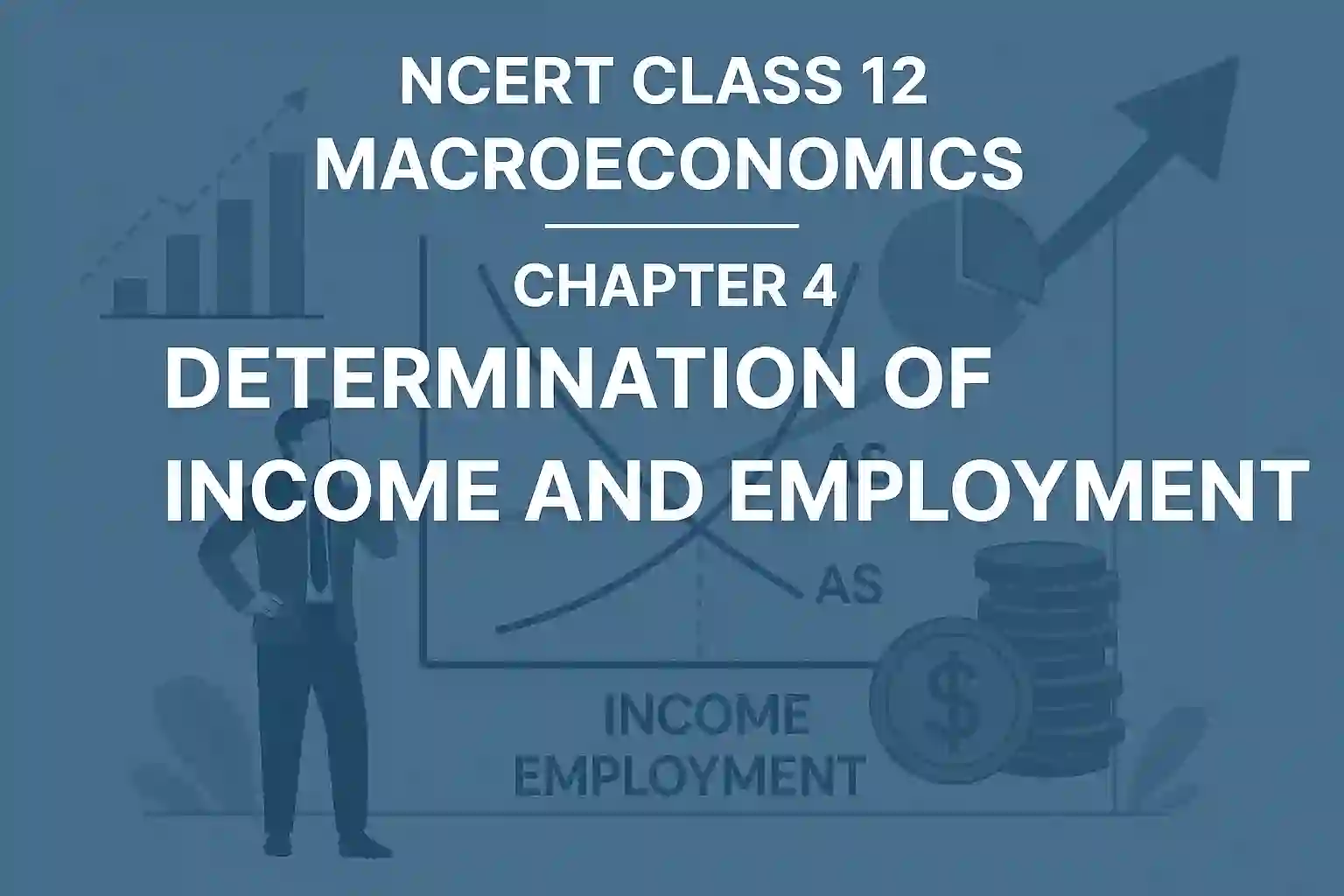The fourth chapter of NCERT Class 12 Macroeconomics is Determination of Income and Employment. This chapter explains how the level of income and employment is decided in an economy. It focuses on aggregate demand and aggregate supply, the role of consumption and saving, and how equilibrium income is achieved. It also introduces important concepts like the multiplier effect and involuntary unemployment, all based on the Keynesian theory of employment.
I’m writing about this chapter because many students feel overwhelmed by the terms and diagrams used here. But actually, this is one of the most important chapters to understand how economies work in real life. Topics like unemployment, underemployment, and recession are directly linked to this chapter. Plus, it’s highly scoring if you understand the basic equations and graphs well. This chapter is also useful for competitive exams and future economic studies. That’s why I’m sharing a clear explanation along with a direct link to the NCERT PDF, so you can study from an authentic and updated source.
What is Determination of Income and Employment?
This chapter answers a very basic question—how does an economy decide how much to produce and how many people to employ? It does this by looking at the total demand and supply in the economy.
The model used in this chapter is based on John Maynard Keynes’ theory, which says that demand plays the most important role in determining income and employment.
Key Concepts Explained in Chapter 4
1. Aggregate Demand (AD)
Aggregate demand is the total demand for goods and services in the economy. It includes:
- Consumption expenditure (C)
- Investment expenditure (I)
So,
AD = C + I
AD increases as income increases, but not at the same rate, because people also save.
2. Aggregate Supply (AS)
Aggregate supply is the total output that firms are willing to produce at different levels of income.
In the short run, AS = National Income (Y).
Common Questions from the Chapter
- Define aggregate demand and aggregate supply
- Explain consumption and saving functions
- Calculate equilibrium income using given values
- What is multiplier? Give an example
- Explain involuntary unemployment in simple words
Practising these questions with diagrams makes it easy to score full marks.
Download NCERT Class 12 Macroeconomics Chapter 4 PDF
To get the official content, you can download the NCERT Class 12 Macroeconomics PDF of Chapter 4: Determination of Income and Employment from here.



















